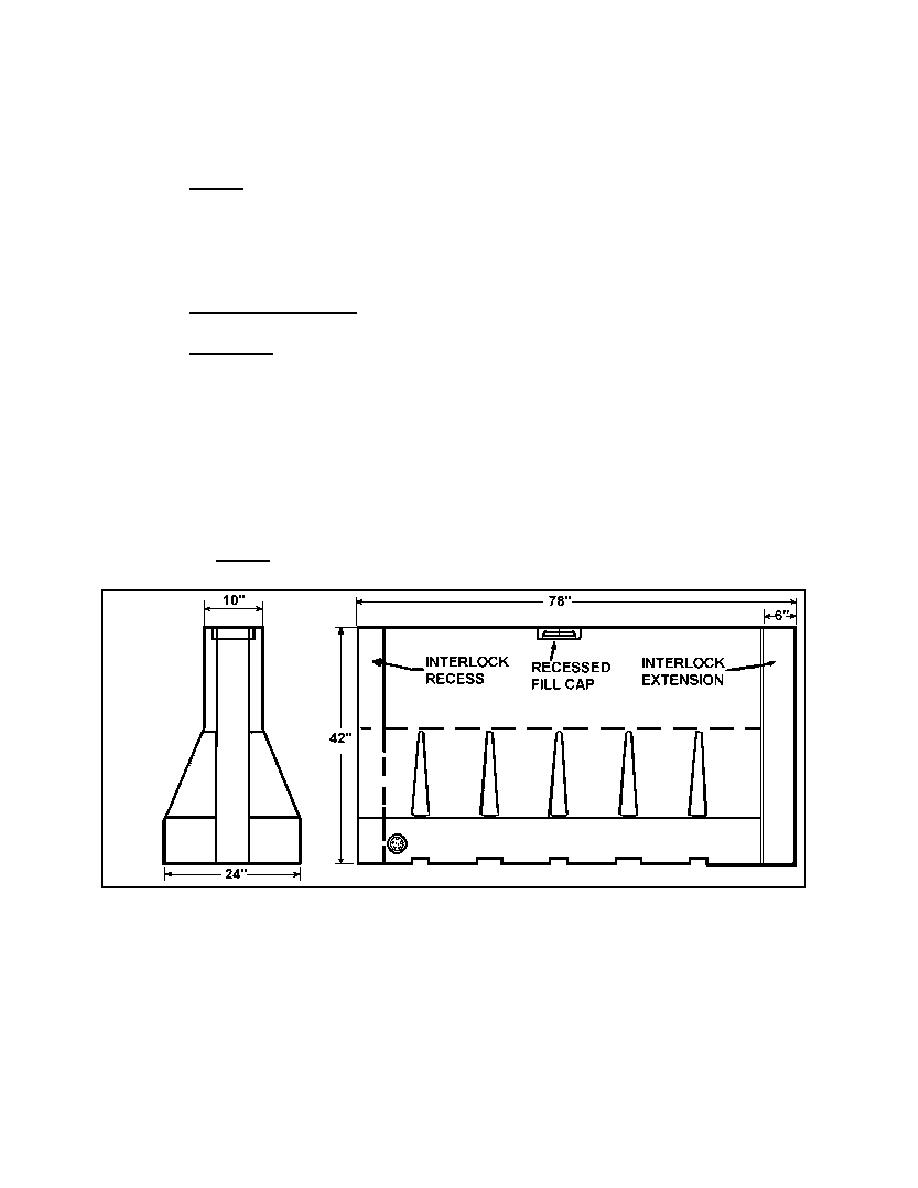

Custom Search
|
|

|
||
 MIL-HDBK-1013/14
8.2.11.2 Testing. Reinforced concrete inverted "T's" have been formally tested. Lighter
versions of this cross section, 6 inches (15 cm) thick, were tested with a 3,000-pound (1,364-kg)
vehicle traveling at 39.6-mph (64 kph). There was no penetration of the barrier by the vehicle.
A configuration similar to Figure 41 was tested with a 15,000-pound (6,818-kg) vehicle traveling
at 30 mph (48 kph). The wall effectively stopped the attack vehicle.
8.2.12
Plastic Barrier Systems
8.2.12.1 Description. Plastic barrier systems (Figure 42) are available from the two
manufacturers listed in Appendix A. They are molded in a configuration similar to the Jersey
Bounce or Barrier, shown in Figure 26. These barriers weigh approximately 130 pounds empty
and 1,600 to 1,800 pounds when filled with water. The units are made from polyethylene plastic
and come in six-foot sections that are easily transported. An interlocking section and steel pipe
are used to link the sections together. Linking the sections is strongly recommended to provide
added resistance to vehicle impact and reduce lateral movement. Surface mounting of these
units limits their use as an effective vehicle barrier, except for low-speed impacts (less than 15
mph) and angles less than 25 degrees. The cost is approximately $300 each.
8.2.12.2
Testing. These units have not been formally crash-tested.
Scale: 1 foot = 0.3048 m
1 inch = 2.54 cm
Figure 42
Commercially Available Plastic Barrier System
80
|
 
|
|
 |
||